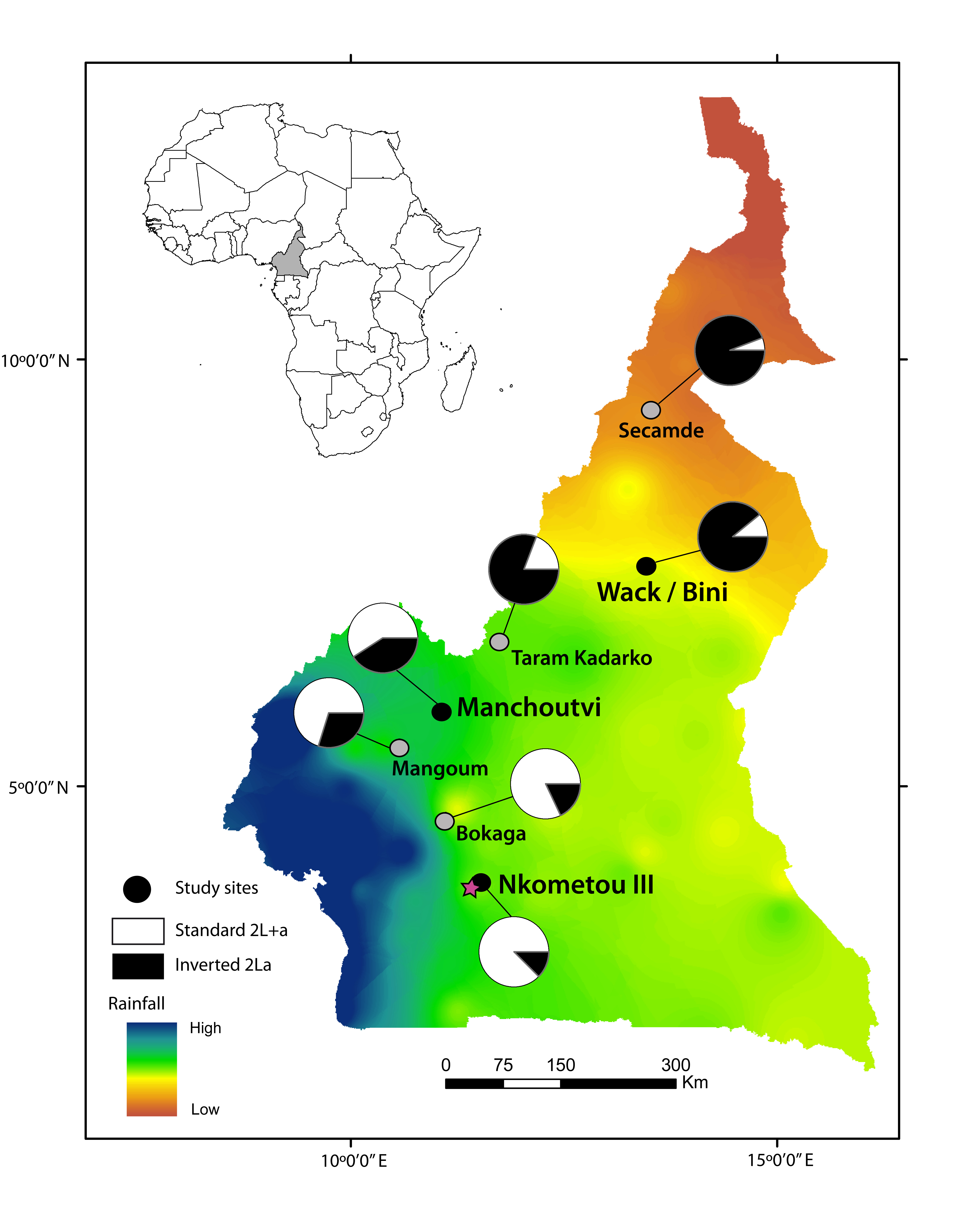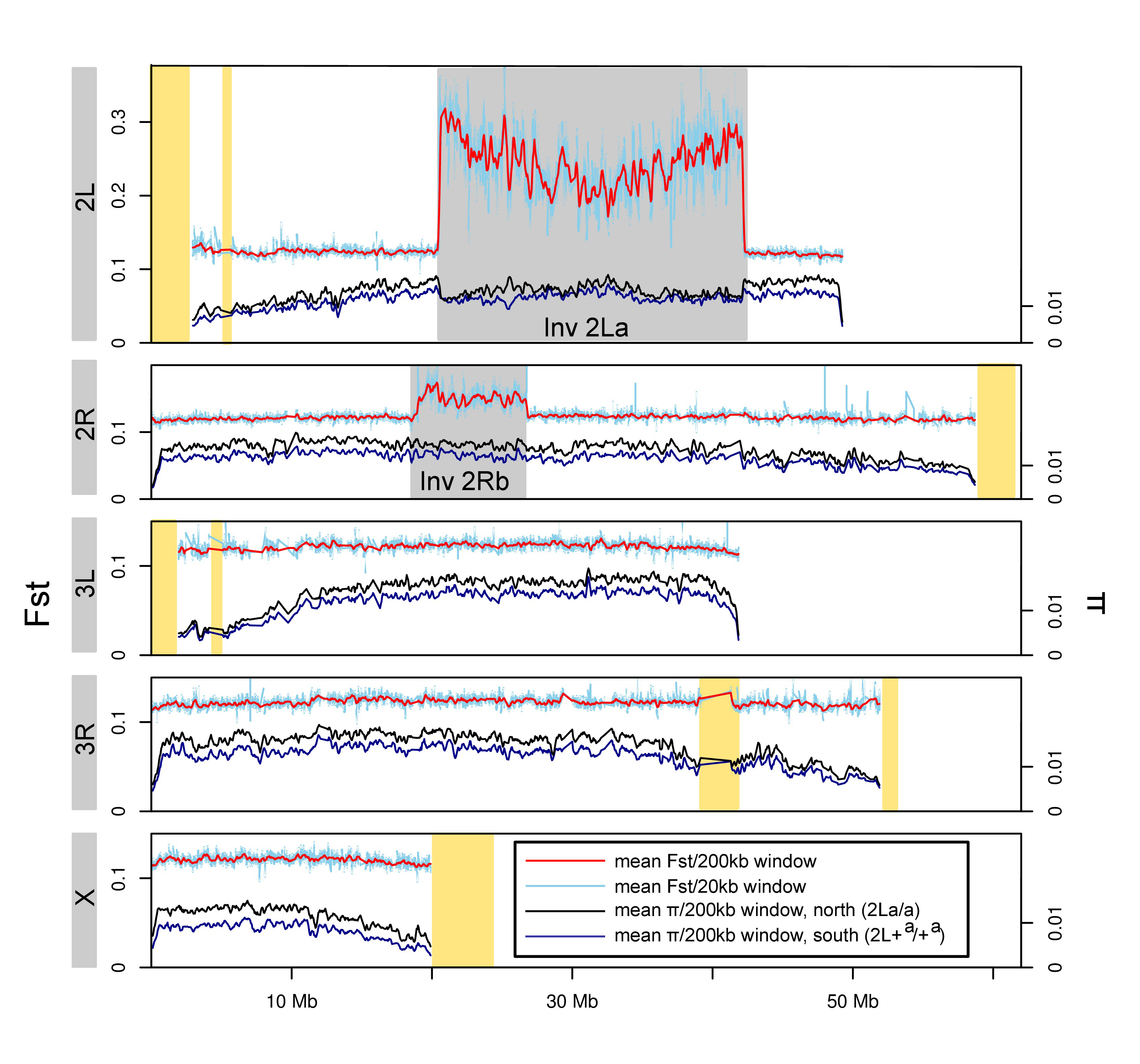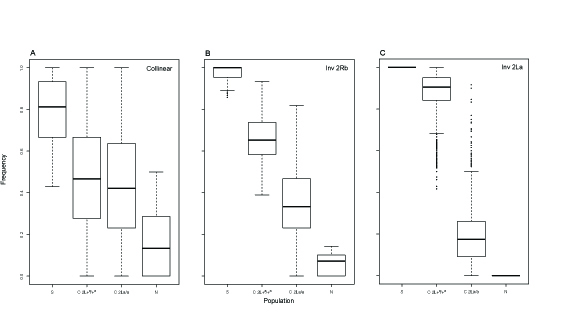Functional Genomics and Systems Biology of Chromosomal Inversions
In Africa, An. gambiae has adapted rapidly to climatically diverse and anthropogenic environments. Instrumental to its ecological flexibility are polymorphic chromosomal inversions that appear to confer adaptations to environmental heterogeneities. Of particular note are alternative arrangements on the left arm of chromosome 2 (2La or +a) that are associated with different climatic conditions. The 2La arrangement is clinally distributed in parts of West and Central Africa, reaching fixation in arid savannas and nearly disappearing in humid rainforests where only the alternative (2L+a) arrangement is found. At a local level, 2La reaches its highest frequency during the dry season and in samples captured resting indoors at night where the nocturnal saturation deficit is higher. Thus, 2La influences a key epidemiological trait—the probability of vector-human contact—as well as the likelihood of vector exposure to insecticide-treated walls and bed nets, through its effect on indoor biting and resting behavior. Our ultimate goal is to identify the genetic, physiological, and behavioral basis of resistance to aridity conferred by 2La. To achieve this goal, we take a multidisciplinary and integrative approach that combines genome scans and population genomics, gene expression profiling, physiological measurements, and behavioral and life history analyses to tease apart the functional genomics and systems biology of 2La.
Collaborators:
C. Costantini (IRD, France; OCEAC, Cameroon); M. Hahn (IU Bloomington); D. Ayala (IRD, France).
 Fig. 1. Sampling sites along a latitudinal transect in Cameroon.
Fig. 1. Sampling sites along a latitudinal transect in Cameroon. Fig. 2. Divergence (FST) between and diversity (p) within An. gambiae S populations from opposite ends of the latitudinal cline in Cameroon.
Fig. 2. Divergence (FST) between and diversity (p) within An. gambiae S populations from opposite ends of the latitudinal cline in Cameroon. Fig. 3. Individual SNP frequencies along the latitudinal gradient in Cameroon, based on loci that most strongly differentiated populations at opposite ends of the gradient.
Fig. 3. Individual SNP frequencies along the latitudinal gradient in Cameroon, based on loci that most strongly differentiated populations at opposite ends of the gradient.